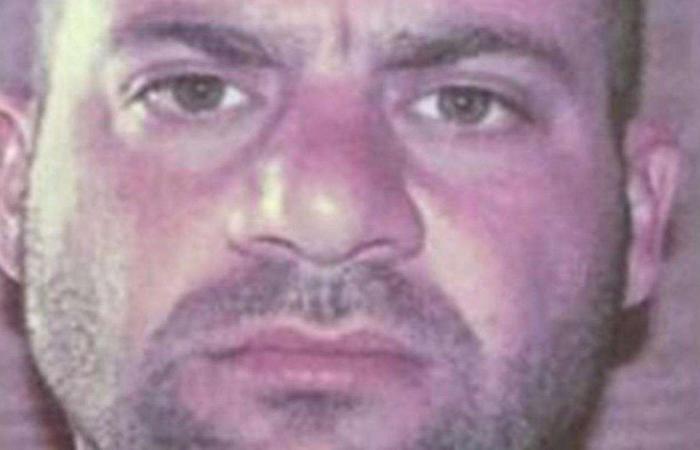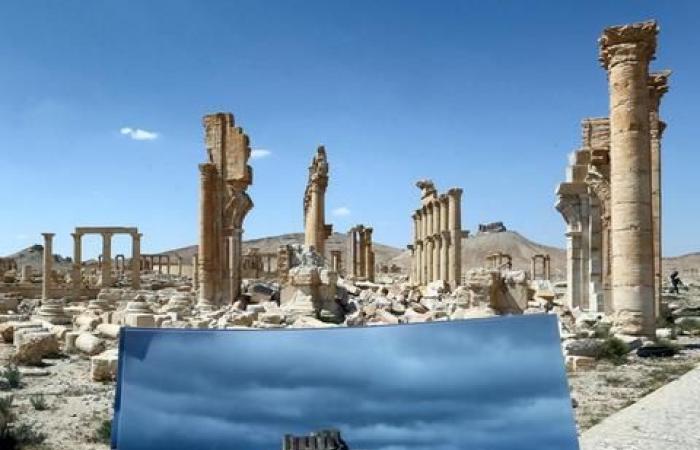Thank you for your reading and interest in the news Al Mawla: new ISIS leader has a reputation for brutality and now with details
Hind Al Soulia - Riyadh - With monikers as divergent as the "Professor" and the "Destroyer", ISIS's new head has a reputation for brutality, but otherwise remains largely an enigma.
Amir Mohammed Said Abd Al Rahman Al Mawla replaced Abu Bakr Al Baghdadi after his death in a raid by US special forces last October.
Al Mawla was initially presented to the world by ISIS as Abu Ibrahim Al Hashimi Al Qurashi – a man about whom America and Iraq had little intelligence.
US officials later came to believe that Al Qurashi was Al Mawla's nom de guerre, recognising him in March as the new head of ISIS.
The State Department immediately placed him on its Specially Designated Global Terrorist list, sparking a quest to learn more about a most-wanted man who now has a $10 million bounty on his head.
One thing everyone seems to agree on is Al Mawla's brutal nature.
He is probably best known for playing "a major role in the campaign of liquidation of the Yazidi minority (of Iraq) through massacres, expulsion and sexual slavery," according to Jean-Pierre Filiu, an extremism analyst at the Sciences Po university in Paris.
A general view taken on March 31, 2016 shows a photographer holding his picture of the Arc du Triomphe (Triumph's Arch) taken on March 14, 2014 in front of the remains of the historic monument after it was destroyed by Islamic State (IS) group jihadists in October 2015 in the ancient Syrian city of Palmyra. AFP
Iraqi men look at a crater left by a massive suicide car bomb attack carried out the previous day by the Islamic State group in the predominantly Shiite town of Khan Bani Saad, 20 km north of Baghdad, on July 18, 2015. AFP
A Syrian man walks past a minaret destroyed following an alleged air strikes by Syrian government forces in the Islamic State (IS) group controlled Syrian city of Raqa, on November 25, 2014. AFP
Men, suspected of being affiliated with the Islamic State (IS) group, gather in a prison cell in the northeastern Syrian city of Hasakeh on October 26, 2019. AFP
A member of the Syrian Democratic Forces (SDF) stands guard in a prison where men suspected to be afiliated with the Islamic State (IS) group are jailed in northeast Syria in the city of Hasakeh on October 26, 2019. AFP
A woman stands in front of a bullet riddled facade in the northern Syrian city of Raqa, the former Syrian capital of the Islamic State (IS) group, on August 21, 2019. AFP
A fighter with the Syrian Democratic Forces (SDF) monitors on Surveillance screens, prisoners who are accused of being affiliated with the Islamic State (IS) group, at a prison in the northeastern Syrian city of Hasakeh on October 26, 2019. AFP
A general view shows blankets hanging across the road for protection from sniper fire in the Hamidiyeh neighbourhood of the northern Syrian city of Aleppo as local popular committee fighters, who support the Syrian government forces, try to defend the traditionally Christian district on the third day of intense battles with Islamic State group jihadists on April 9, 2015. AFP
An undated image, which appears to be a screenshot from a video and which was published by the Islamic State group in the Homs province (Welayat Homs) on August 25, 2015, allegedly shows smoke billowing from the Baal Shamin temple in Syria's ancient city of Palmyra. AFP
The house of local farmer Hamad al-Ibrahim is seen destroyed in the eastern Syrian village of Baghouz on March 13, 2020, a year after the fall of the Islamic State's (IS) caliphate. AFP
A picture taken on January 13, 2020 during a press tour organised by the US-led coalition fighting the remnants of the Islamic State group, shows a view of the damage at Ain al-Asad military airbase housing US and other foreign troops in the western Iraqi province of Anbar. AFP
A general view shows a bridge that was destroyed by the Islamic State (IS) group after they took control of the river crossing and rebuilt the bridge as US-backed Kurdish and Arab fighters advance into the Islamic State (IS) jihadist's group bastion of Manbij, in northern Syria, on June 23, 2016. AFP
Iraqis look at the damage at aftermath scene of a mortar and bombing attack on the Sayyid Mohammed shrine in the Balad area, located 70 kilometres (around 45 miles) north of Baghdad, on July 8, 2016. AFP
A general view taken on March 27, 2016 shows part of the remains of Arch of Triumph, also called the Monumental Arch of Palmyra, that was destroyed by Islamic State (IS) group jihadists in October 2015 in the ancient Syrian city of Palmyra, after government troops recaptured the UNESCO world heritage site from the Islamic State (IS) group. AFP
Iraqi Kurdish and Turkmen Shiite forces sit in the northern Iraqi town of Bashir after they recaptured the town from the Islamic State (IS) group on May 1, 2016. AFP
The new ISIS leader was born, likely in 1976, in the town of Tal Afar, some 70 kilometres from Mosul.
He was born into a Turkmen family, making him a rare non-Arab to ascend the ranks of ISIS, which at its height ruled vast parts of Iraq and Syria and drew volunteers from the West.
His ethnic origins prompted the United Nations to predict in a January report that he might be a "temporary choice until the group finds a more legitimate 'emir', a direct descendant from the Quraysh Hashemite tribe who could therefore command the full support of the remote provinces."
Al Mawla graduated from the Islamic Sciences College in Mosul.
A former officer in the army of Saddam Hussein, he joined the ranks of Al Qaeda after the US invasion of Iraq and Hussein's capture in 2003, according to the Counter Extremism Project think-tank.
He took on the role of religious commissary and a general Sharia jurist for Al Qaeda.
In 2004, Al Mawla was detained by US forces at the Camp Bucca prison in southern Iraq, where he met Al Baghdadi.
Both men were later freed, and Al Mawla remained at Al Baghdadi's side as he took the reins of the Iraqi branch of Al Qaeda in 2010, then defected to create ISIS.
In 2014, according to the CEP, Al Mawla welcomed Al Baghdadi to Mosul "before leaving Al Qaeda and pledging allegiance and full support to the radical's mission, providing ISIS the support to quickly take control of the city".
A profile drawn up by the CEP said that Al Mawla "quickly established himself among the insurgency's senior ranks, and was nicknamed the 'Professor' and the 'Destroyer'".
He was well respected among ISIS members as a "brutal policymaker" and was responsible for "eliminating those who opposed Al Baghdadi's leadership", it said.
Analysts believe Al Mawla will now seek to prove he is his own man by attempting to reboot an organisation weakened by years of US-led assaults and the loss of its self-proclaimed "caliphate" in Syria last year.
And he may choose to act now that the US is withdrawing troops from Syria.
In a portent of things to come, ISIS fighters have carried out an attack every three days on average in Syria in recent months, according to the Washington-based Centre for Global Policy.
Hisham Al Hashimi, a Baghdad-based specialist on the extremist movement who was assassinated in Baghdad this month, recently estimated the group's monthly revenues in Iraq from investments and taxes it collects at some $7 million.
"Despite its serious losses in territory and manpower, it remains financially solvent, creative, lethal, and once again confident enough to threaten those who violate its principles," CGP analyst Abdullah Al Ghadhawi wrote.
This means Al Mawla has both the incentive and the means to assert himself.
"There are complaints about him from the field, there are still questions about what kind of organisation he will be running, how competent of a leader he is going to be, how successful he'll be in reconstituting a caliphate, how inspiring he'll be," Seth Jones of the Centre for Strategic and International Studies in Washington said.
"There is going to be a lot of challenges, in inspiring the field but also avoiding to be killed like Al Baghdadi," Mr Jones said.
"If he is successful and recreates a caliphate, if the US withdraws its forces, if they're able to capitalise in other countries, that could go a long way to reduce concerns about his background," he warned.
While the group's weakened position renders a major strike such as the 2015 assault on Paris unlikely for now, officials should not rule out smaller, less devastating but symbolic attacks on the West, Mr Jones added.
Updated: July 21, 2020 11:13 AM
These were the details of the news Al Mawla: new ISIS leader has a reputation for brutality for this day. We hope that we have succeeded by giving you the full details and information. To follow all our news, you can subscribe to the alerts system or to one of our different systems to provide you with all that is new.
It is also worth noting that the original news has been published and is available at The National and the editorial team at AlKhaleej Today has confirmed it and it has been modified, and it may have been completely transferred or quoted from it and you can read and follow this news from its main source.


